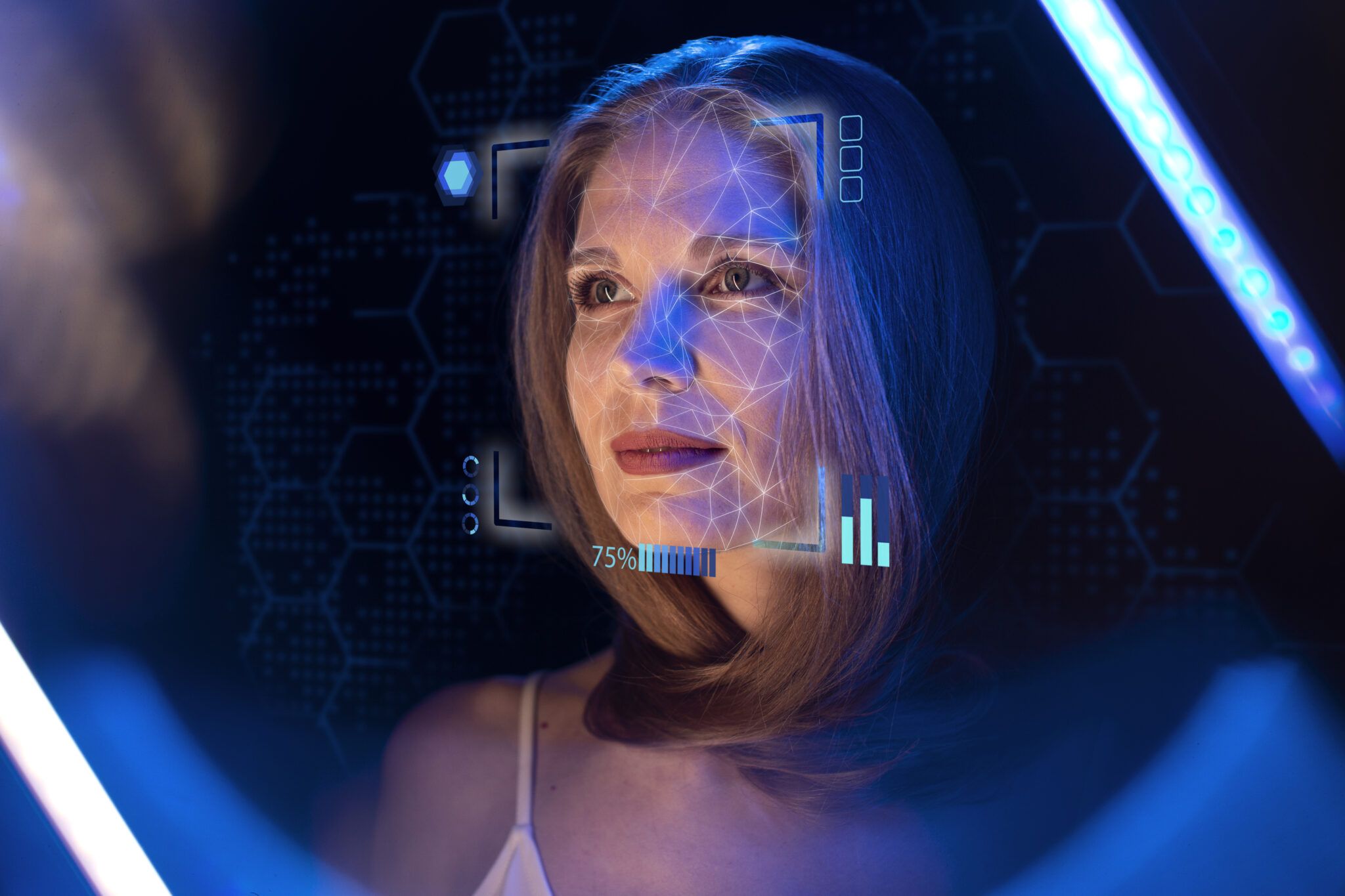With the rise of digital identity verification and remote onboarding, detecting liveness has become a critical component for determining if an individual is physically present during an authentication process or simply presenting a photo. detecting liveness refers to the capability of differentiating between live subjects and spoofed or artificial objects, such as photos, videos, or masks. During an identity verification or onboarding session, liveness detection uses techniques like facial recognition, eye movement tracking and challenging the user to complete tasks to confirm a real, living person is present on the other side of the device’s camera and not just a static photo or video recording.
Algorithm behind Liveness Detecting
| Algorithm Type | Approach | Strengths | Weaknesses |
|---|---|---|---|
| Motion Analysis (Blink Detection, Lip Movement, etc.) | Analyzes subtle facial movements for signs of life. | Simple to implement, user-friendly. | Vulnerable to sophisticated replay attacks, low light conditions can reduce accuracy. |
| 3D Depth Analysis | Uses specialized sensors (like structured light or Time-of-Flight) to create a 3D facial map. | Highly resistant to photo/video attacks. | Can be expensive, requires specialized hardware, might struggle with some facial features. |
| Texture Analysis | Examines skin texture patterns to distinguish real from fake. | Works with static images, computationally efficient. | Sensitive to image quality, can be fooled by high-quality masks. |
| Challenge-Response | Asks the user to perform actions (smiling, head movements) to prove liveness. | Harder to fake than static methods. | Less user-friendly, potential for usability issues. |
| Heartbeat Detection | Analyzes subtle color changes on the skin to detect blood flow/heartbeat. | Non-intrusive, passive. | Requires high-quality camera, lighting-sensitive, accuracy can be affected by health conditions. |
| Multi-Modal Fusion | Combines output from multiple liveness detection algorithms. | Improved accuracy, harder to spoof. | Can be computationally complex, increases implementation cost. |
| Machine Learning (Deep Learning) | Trains complex models to distinguish real vs. fake based on large datasets. | Adaptable, potential for high accuracy. | Requires extensive data and training effort, potential for bias if datasets are not diverse enough. |
Need of Implementing Liveness Detection
| Need for Liveness Detection | |
|---|---|
| Preventing Identity Theft | Imposters can steal personal information to create fake accounts or commit fraudulent activities. |
| Mitigating Account Takeover | Attackers can gain unauthorized access to legitimate user accounts. |
| Combating Synthetic Identity Fraud | Fraudsters create entirely fake identities using a mix of real and fabricated information. |
| Upholding KYC Regulations | Know Your Customer' regulations in various industries require robust identity verification. |
| Reducing Bot Attacks | Bots often use fake or stolen images for user profiles to automate malicious activities. |
| Protecting High-Value Transactions | Liveness checks can act as an extra authentication layer for sensitive financial transactions. |
| Deterring Deepfake Fraud | Deepfakes pose a growing threat, impersonating individuals with realistic videos for scams. |
| Maintaining Trust in Online Systems | Users need reassurance that their data and activities are secure from fraudulent impersonation. |
| Improving Accessibility | Address diverse user needs by offering accessible liveness detection alternatives (like text or voice-based verification). |
| Enhancing the Remote User Experience | Liveness detection streamlines remote onboarding and remote service access without compromising security. |
Advanced Software Solutions for Liveness Detection
| Software Name | Vendor/Provider | Type | Features |
|---|---|---|---|
| Oz Liveness | Oz Forensics | Cloud-based & On-premise | Combines multiple modalities (facial, behavioral), certified against ISO30107 presentation attack standards, deepfake detection. |
| Paravision Liveness | Paravision | Cloud-based & On-premise | Advanced 3D analysis and passive liveness, spoof-proof design, integrates with other Paravision AI modules. |
| Amazon Rekognition | Amazon Web Services (AWS) | Cloud-based | Offers liveness checks alongside face detection and analysis, easily integrates into AWS ecosystem. |
| ComplyCube | ComplyCube | Cloud-based | KYC-focused platform, includes liveness checks as part of broader identity verification suite. |
| Jumio | Jumio | Cloud-based & On-premise | Certified 3D liveness, combines passive and active challenges, aimed at high-security use cases. |
| iProov | iProov | Cloud-based & On-premise | Patented "Flashmark" technology for active liveness, strong against sophisticated replay attacks. |
| Onfido | Onfido | Cloud-based | Utilizes motion-based and passive liveness, focus on seamless UX, offers document verification alongside liveness detection. |
| ID R&D | ID R&D | Cloud-based & On-premise | Anti-spoofing with advanced texture analysis, deepfake detection, flexible deployment options. |
Best Practices and Strategies of Implementing Liveness Detection
| Best Practice/Strategy | Explanation |
|---|---|
| Choose the Right Approach | Select liveness detection methods (passive, active, 3D) based on security needs, user experience goals, and budget. |
| User-Friendly Design | Make the process intuitive with clear instructions and visual aids. |
| Transparency and Consent | Explain the purpose of liveness detection to users and obtain their consent. |
| Thorough Testing | Test against various spoofing attacks (photos, videos, masks, deepfakes) and lighting conditions. |
| Multi-Layered Security | Combine liveness detection with other authentication factors (passwords, biometrics). |
| Monitor and Adapt | Stay updated about new spoofing techniques and continuously improve your liveness detection system. |
| Anti-Bias Measures | Ensure algorithms work fairly for diverse user populations. |
| Set Clear Success Metrics | Define your goals for accuracy (false positives/negatives) and user experience (completion rates). |
| Provide Feedback Mechanisms | Offer clear instructions and feedback during the liveness detection process. |
| Utilize Anti-Spoofing Techniques | Incorporate measures to detect presentation attacks (photo/video replay, mask detection, deepfake detection). |
| Prioritize Quality Lighting | Ensure good lighting environments for optimal image/video capture. |
| Continuous Risk Assessment | Regularly evaluate the risks of your specific application and adjust your liveness detection strategy accordingly. |
| Incident Response Plan | Have a plan in place in case of a suspected liveness detection bypass or security breach. |
Real World Application of Liveness Detection
| Application Area | Specific Use Cases | Benefits |
|---|---|---|
| Finance | * Remote account opening * High-value transaction authorization * Preventing account takeover attempts | Streamlines onboarding, bolsters fraud prevention |
| Online Education | * Exam proctoring * Identity verification during assessments | Ensures integrity and fairness of remote examinations |
| Sharing Economy | * User verification for ride-sharing, home rentals, etc. | Helps build trust between platform users, reduces the risk of fake accounts |
| Government Services | * Access to social benefits * Issuing digital IDs * Remote voting (experimental) | Prevents fraud, ensures only eligible persons receive services |
| Healthcare | * Secure telemedicine consultations * Patient identification for remote care | Verifies patient identity, protects sensitive health data |
| Border Control | * Automated passport verification * e-Gate systems at airports | Speeds up border processes, enhances security measures |
| Workforce Management | * Remote time & attendance tracking * Preventing "buddy punching" for employees | Confirms employee presence, optimizes workforce monitoring |
| Age Verification | * Access to age-restricted websites/services * Purchase of controlled substances (alcohol, tobacco) | Protects minors, enforces age restrictions online |
facial recognition
Conclusion
Detecting liveness is transforming the way we interact online. From secure banking to fair online exams, it’s the digital shield against fraud and impersonation. As technology evolves, we’ll see even more creative and robust applications, ensuring trust in our ever-expanding digital world. The key lies in balancing security with a user-friendly experience. By choosing the right methods, implementing intelligently, and always prioritizing user privacy, detecting liveness will continue to be a cornerstone of a safe and reliable online experience.


